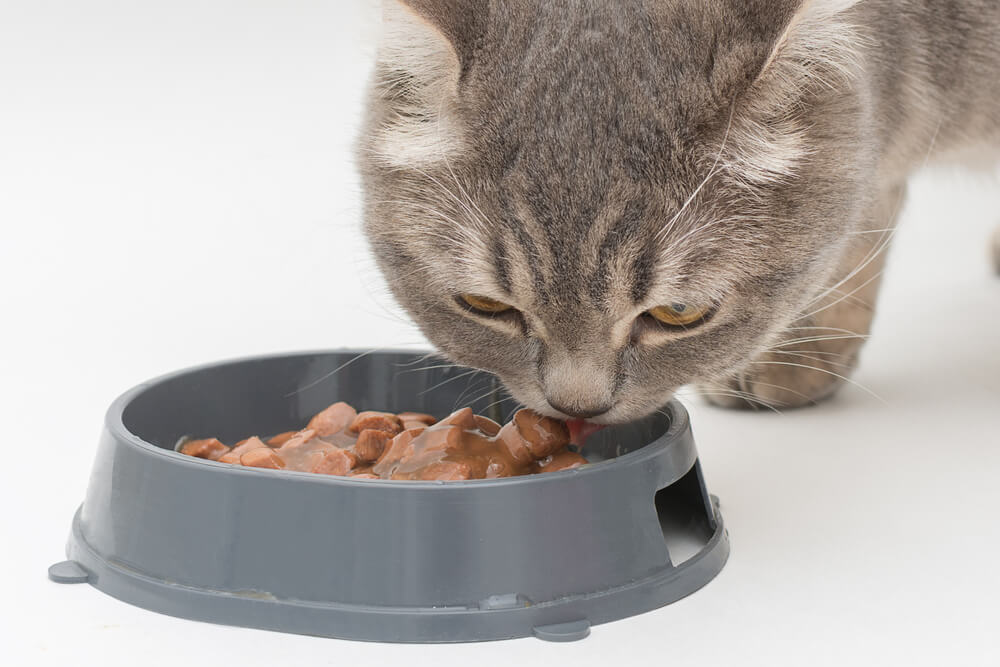
Tapeworms in cats are a common problem, yet most pet parents don’t know what to do if their cat has tapeworms, and how to get rid of the parasites.
If you visit your vet regularly, they’ll no doubt encourage you to consistently give worming tablets to your feline companion.
This is to stop them getting worms in the first place, as well as disrupting the lifecycle of the tapeworm if your cat has them.
The good news is that if your cat does have tapeworms it can be treated with ease, and the outcome for your cat is good.
But we’re jumping ahead a little in our tapeworm-based guide. Let’s start at the beginning by describing exactly what a tapeworm is.
What is a tapeworm?
A tapeworm is a parasite that can live in the intestines of cats (as well as other mammals including dogs and humans). It’s flat with a segmented body, and can grow up to 30cm in length.
It features hooks on its mouth which it uses to attach itself to the internal wall of the bowels. As it grows, the tail segments, which contain eggs, break off and pass through the intestine, exiting with the feces.
You may see these small, white segments on cat feces — they look like grains of rice, around 1cm long.
How does a cat get tapeworms?
The most common way that cats pick up tapeworms is via eating a flea larvae that has consumed a tapeworm egg. The tapeworm egg grows and develops inside the larvae, then your cat eats the larvae and so the tapeworm egg is inside your cat.
As the flea larvae moves through the cat’s digestive system, the tapeworm egg is released in the intestine, where it continues its lifecycle, growing to adult size.
Other ways your cat can get tapeworms is by eating other infected cats’ feces, or some mothers can pass it on to their kittens.
How do I know if my cat has tapeworms?
There are not many signs that your cat has tapeworms. It doesn’t make them ill in any noticeable way. The most likely sign that your cat has a tapeworm is the white segments in your cat’s feces or litter tray.
You may also see them scooting across the ground on their bottom, or regularly licking or trying the scratch the area due to irritation.
It’s a misconception that tapeworms can cause your cat to lose weight — your cat may vomit if the tapeworms have moved to the stomach, but the tapeworms are usually brought up with the vomit when this happens.
How can I treat tapeworms at home?
If you notice your cat has tapeworms, you should take them to your veterinary surgeon. They will prescribe deworming medication which most times will solve the problem quickly and easily.
If your cat has a tapeworms it might also mean they have fleas, or there’s an infestation nearby, so it’s recommended you also treat your cat for fleas so that they don’t pick up another tapeworm.
Tapeworm prevention
The best way to stop your cat from getting tapeworms is to ensure you regularly give them preventative treatment.
Your vet will suggest you do this from about six months of age, and then regularly once they are adult age every two to six months to ensure the best possible protection from tapeworms.
Regularly treating your cat for fleas, and eradicating any infestations you notice, will also reduce the chance of your cat picking up a tapeworm infection.
We uphold the highest editorial standards when creating the authoritative content pet parents rely on and trust.
Every piece of clinical content on the Cat Food Advisor is reviewed by our certified Veterinary Advisory Board, which consists of licensed veterinarians and medically certified specialists.
Our reviews are completely independent; we are not paid by any pet food company to promote their products favorably. We do not accept money, gifts, samples or other incentives in exchange for special consideration. For more information see our Disclaimer & Disclosure page.










